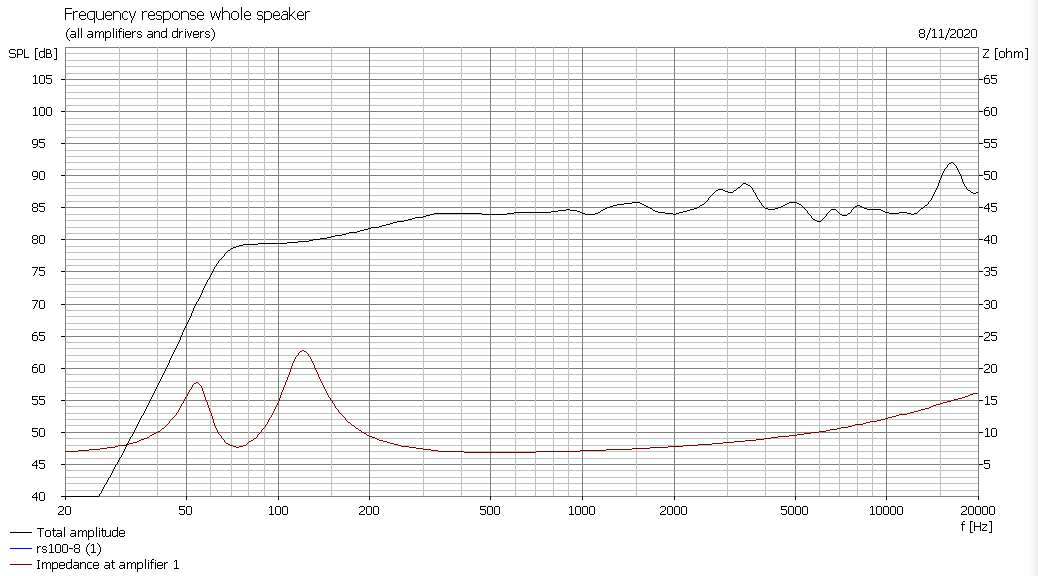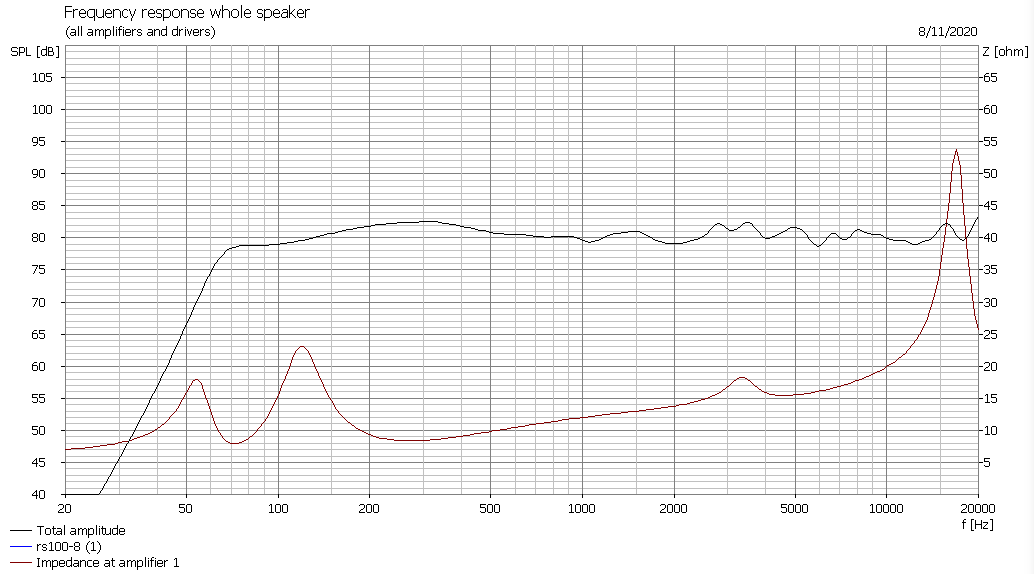Dear All!
This is first time I designed acoustic system for monitoring purposes.
Speaker is Dayton rs100-8, 4". It can handle 30watt rms max, and 60 watts at peak.
Also it has very good frequency response curve (dunno how close real speaker is to that curve).
Here is calculation of frequency response in cabinet at zero degrees:

So, to achieve better results, I decided to involve passive filters to flatten FR.

Filters from left to right - Notch filter around 3,3khz, baffle step correction, Notch filter around 17khz.

So the problem I faced - which power rating components to choose in this circuit. Maximum power intended to use here - 20watts.
Does it mean that resistors must have 20watt rating (or better more), and inductors to be 2.5A plus?
I really don't want to have burning and smelling monitors
I would appreciate any constructive criticism. For example I'm not sure if impedance characteristics are good, also High end of FR has that spikes, and not drops smoothly. May it cause unwanted harmonics or something else? (I understand it is above hearing range )
)
This is first time I designed acoustic system for monitoring purposes.
Speaker is Dayton rs100-8, 4". It can handle 30watt rms max, and 60 watts at peak.
Also it has very good frequency response curve (dunno how close real speaker is to that curve).
Here is calculation of frequency response in cabinet at zero degrees:

So, to achieve better results, I decided to involve passive filters to flatten FR.

Filters from left to right - Notch filter around 3,3khz, baffle step correction, Notch filter around 17khz.

So the problem I faced - which power rating components to choose in this circuit. Maximum power intended to use here - 20watts.
Does it mean that resistors must have 20watt rating (or better more), and inductors to be 2.5A plus?
I really don't want to have burning and smelling monitors
I would appreciate any constructive criticism. For example I'm not sure if impedance characteristics are good, also High end of FR has that spikes, and not drops smoothly. May it cause unwanted harmonics or something else? (I understand it is above hearing range







